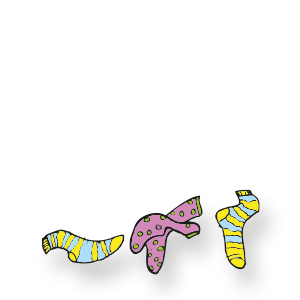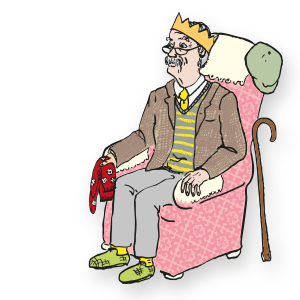

All Behaviour Serves a Purpose
Getting to the root of things
The Ollie concept is based on this key theory : All behaviour serves a purpose
Many therapists take the presenting issue as the issue. We do not. The best way to describe this is my talking about trees!
Imagine a tree with branches. Let’s put your issues on those branches, and let’s use a case study of a young lad of 7 to explain this approach.
The young lad was bought to me with the label agoraphobic. For months and months various therapists had been working with him to get rid of his fear of being outdoors, or rather leaving the house.
Let’s put agoraphobia on one of our branches. Now with a lot of patience and effort you might be able to cut that branch off and get rid of the agoraphobia for a while, but only for a while. If you just keep pruning branches rather than do what we do, which is follow that branch back to its root, chances are the branch will re-grow stronger.
To be fair this had been done, sort of. The therapists found a start date of this little lad’s problem. They looked at what had occurred on that date and made a decision on the lad based on the events around that time to diagnose or label him.
A week before the lad started to refuse to leave the house he had been in school in a presentation on stranger danger. Apparently it was quite graphic so it was concluded this had created the lads fear of going outside. Lots of work around reassuring him he was safe from strangers was instigated. All to no avail, and the parents and therapists were at a loss as to how to reassure him and so resolve the issue.
Now let’s look at that branch, agoraphobia / afraid to leave the house.
The lad was not responsive and would not open up to the therapists which was put down to an inability to articulate his fears or that he was deeply traumatised.
With Ollie we introduce the idea of super powers – little people inside us that are our emotions. We do this because it helps us help the child dissociate from the issue and loose the label that becomes a very protective shield.
I drew a tree for the lad but instead of putting agoraphobia on the branch, I asked him how going outside made him feel.
He said scared.
I asked if he knew where Scared lived inside him and he pointed to his tummy.
So I made a play of reaching into his tummy and pulling his little super power called Scared out and I sat him on the branch of our tree.
I explained that it was actually Scared who was worried about being out side and not the little lad and asked if the little lad would help me help Scared feel better.
That I would talk to Scared but that Scared would only answer my questions by putting the answers in the young lads head so would he tell me what Scared was saying.
The lad agreed. All be it, looking at me very strangely.
“Ok Scared, you don’t like leaving the house? Do you only feel safe at home or are there other places you feel safe.”
Through the lad, Scared said he felt safe anywhere he was in a building.
“Ok, thank you Scared. So outside is the scary bit but other buildings and home are ok?
The lad confirmed that his friend’s house and families houses was ok. And with a bit of probing we got that everywhere including the cinema and Tesco was ok just not outside and not school.
“Ok Scared, why is outside and school not ok and everywhere else inside is ok?”
The little lad shifted in his seat and said nothing. Although I stayed focused on the drawing and his Scared super power and not on the lad I could see he was uncomfortable.
I asked if I could speak to the little super power that was not comfortable. The lad said yes and after some probing the lad said this super power was called Angry.
So I pulled Angry out, who also lived in his tummy and put him on a branch.
“Hello Angry, nice to meet you. Do you know why little Scared super power here doesn’t like outside or school and why it makes you angry?”
Nothing. But the lad was getting more uncomfortable.
“Ok, what other super powers don’t like outside or school?”
With a little pushing I got Sad, Frightened, Cross, out as well, and put them on the branches.
Sad was an interesting one so I started there.
“Hello Sad. Why do you think all these super powers are not happy outside or at school? Why does being out side or at school make you sad?”
It took a few more questions but finally Sad blurted out “it’s not my fault!”
Bingo! So I gently calmed Sad down and staying focussed on the tree, not the lad, I asked what was not his fault?
Basically, Sad was Sad because he got into trouble for wetting himself during the presentation about stranger danger because although he asked to go to the toilet he was told to sit still. The other kids laughed and the little lad got told off when he couldn’t help but to wet himself in front of everyone. This made Angry angry as it was not his fault. This made Frightened frightened because when the little lad was five he wet himself at a family wedding and mum went ballistic!
I then asked the troubled superpowers what would make it ok for them to be happy about leaving being out side or at school and it was around access to a toilet.
If I had kept going I am sure the real super power behind him not wanting to leave the house was Fear and Shame.
The Ollie concept of freeing kids from the generalised, often incorrect, labels helps us get to the real route of the problem very, very quickly (that was one session). Pleased to report that the little lad is back at school and now knows that if he puts his hand up, he will be able to excuse himself!
All behaviour serves a purpose, but it’s rarely what it seems and we have to look for the root rather than waste time pruning branches.
Making the child aware of his or her super powers allows us to disassociate the issue from the child so that can talk about it and it empowers the child as it allows us to get the child to help find a solution.

